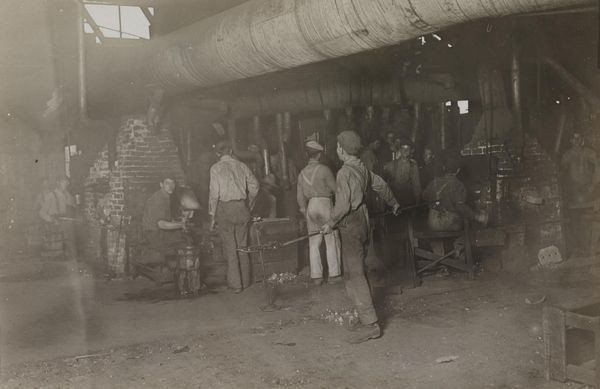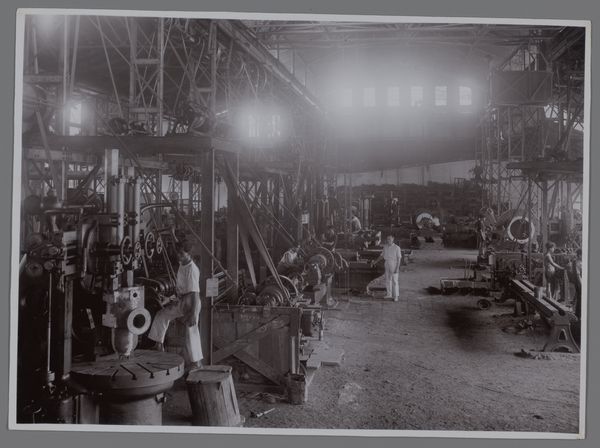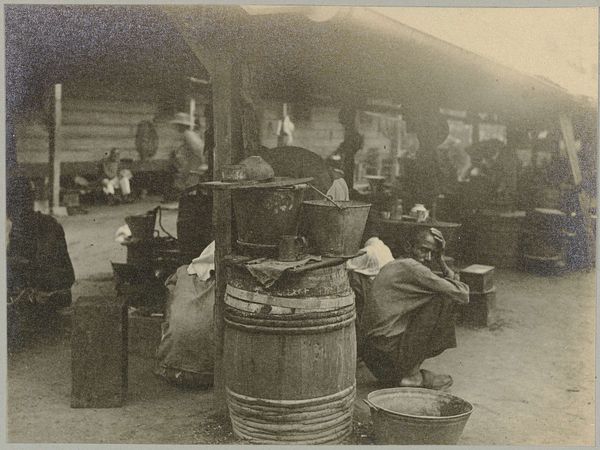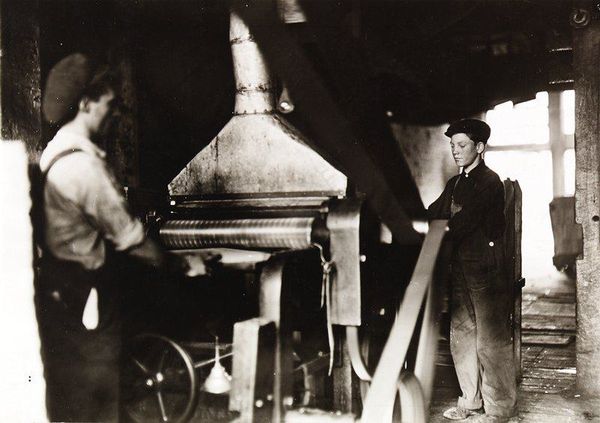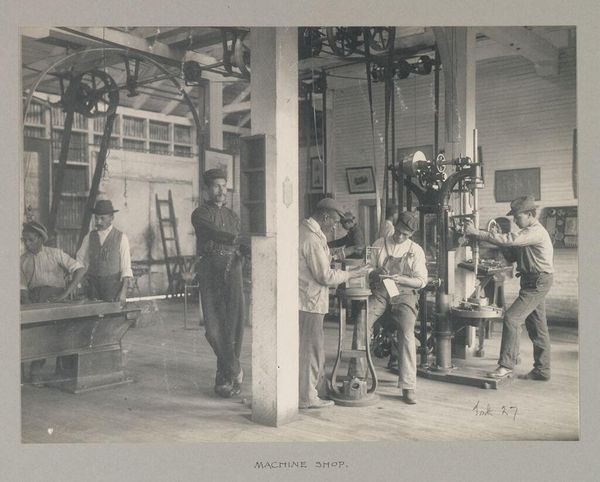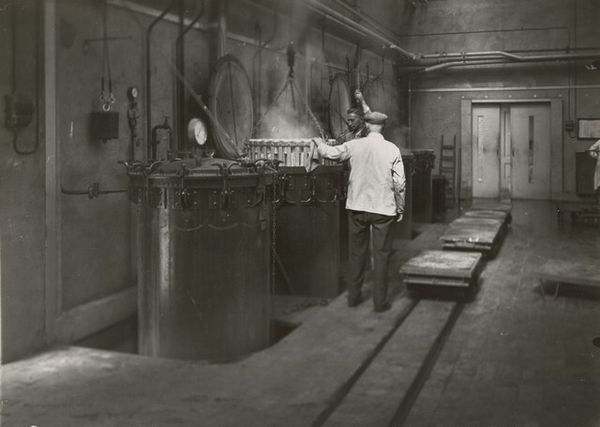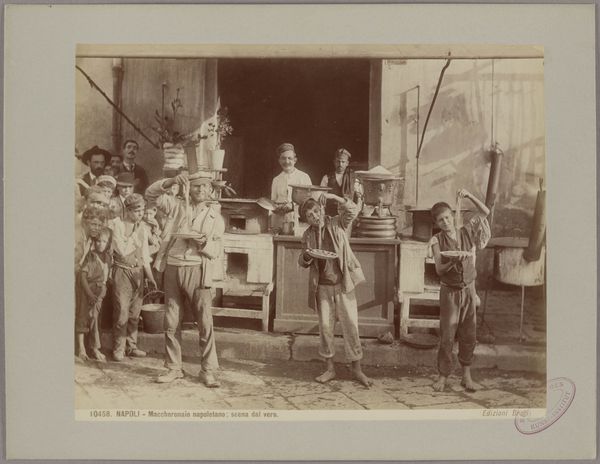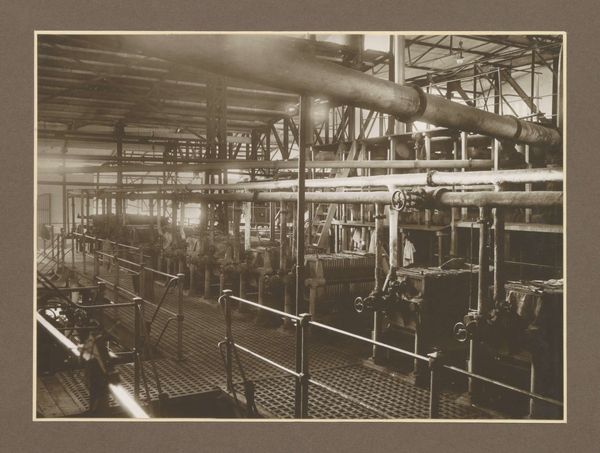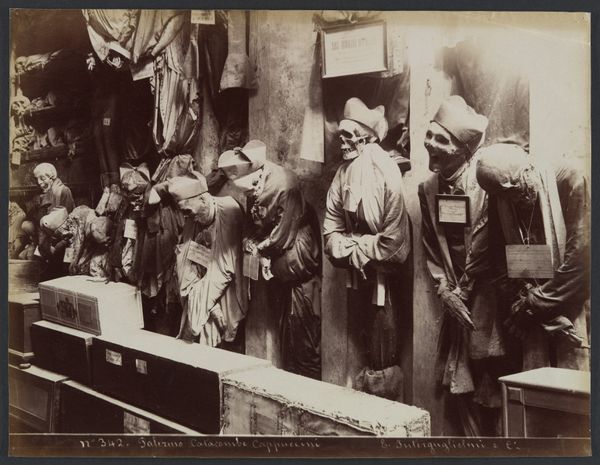
print, photography, gelatin-silver-print
#
portrait
#
print photography
# print
#
landscape
#
social-realism
#
photography
#
gelatin-silver-print
#
ashcan-school
#
genre-painting
#
realism
Copyright: Public domain
Editor: This is Lewis Hine's gelatin-silver print, "Glass Works, Midnight, Indiana, 1908." The scene is gritty, almost overwhelmingly industrial. What strikes me most is the palpable weight of labor depicted. How do you see this photograph? Curator: I see a critical document of industrial labor practices. Hine’s choice of gelatin-silver printing allowed for crisp details that showcase the materiality of the factory environment – the soot, the worn tools, even the clothing. But it’s not just about depicting reality, is it? Consider how the photographic process itself, dependent on the exploitation of silver mines and chemical manufacturing, mirrors the larger cycles of production and consumption that are on display. Editor: That's a very interesting perspective I had not considered before. So, are you suggesting that the photo is, in some way, a critique of the very system that enables its creation? Curator: Precisely! Look at the composition. The cramped space, the intense heat implied by the machinery… These boys are part of an industrialized system that processes not only raw materials but also young lives. Do you think that Hine's deliberate use of light helps emphasize that dichotomy? Editor: Definitely. The light almost seems to single them out, highlighting their youth amidst the dark, imposing machinery. It's hard not to see it as a commentary on exploitation. Curator: Absolutely. By meticulously documenting the process and the conditions, Hine reveals the social context of art making – or, in this case, the making of… everything else. What did you notice? Editor: I initially focused on the emotional impact, but now I realize the materials and means of production are central to the photograph's meaning. Curator: Exactly. Hopefully, this highlights the connection between materials, processes, and their place in historical movements of art and production!
Comments
No comments
Be the first to comment and join the conversation on the ultimate creative platform.
